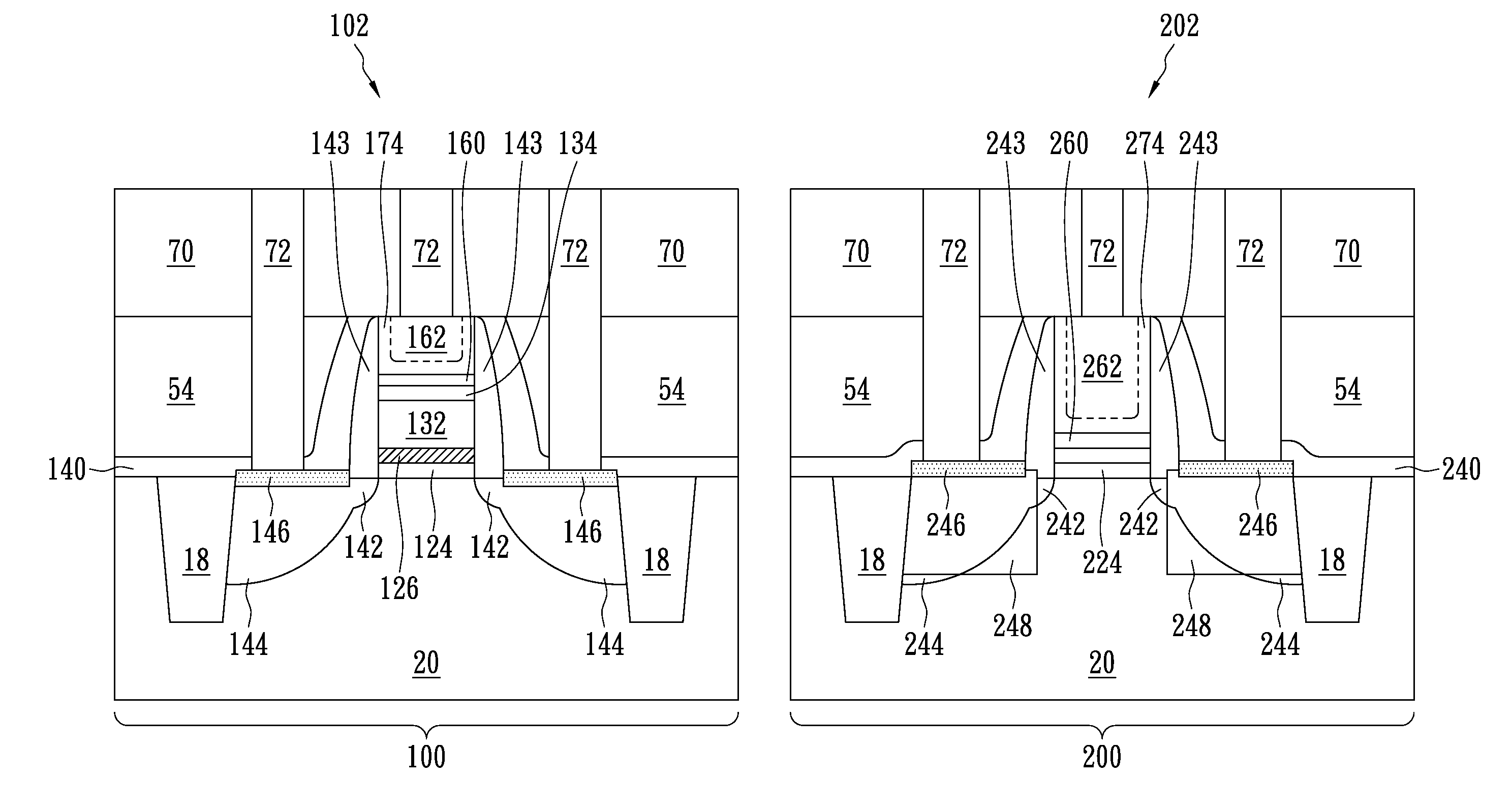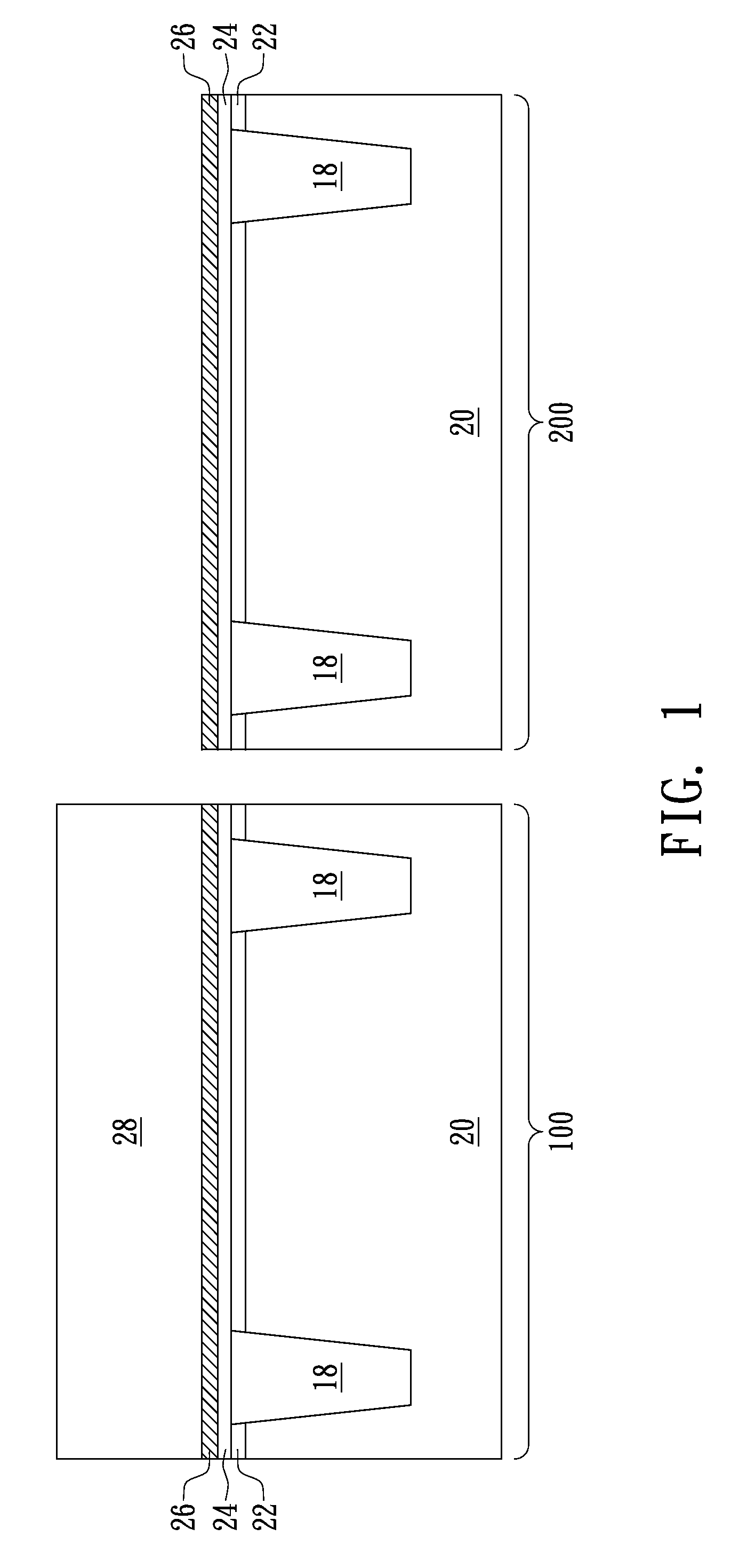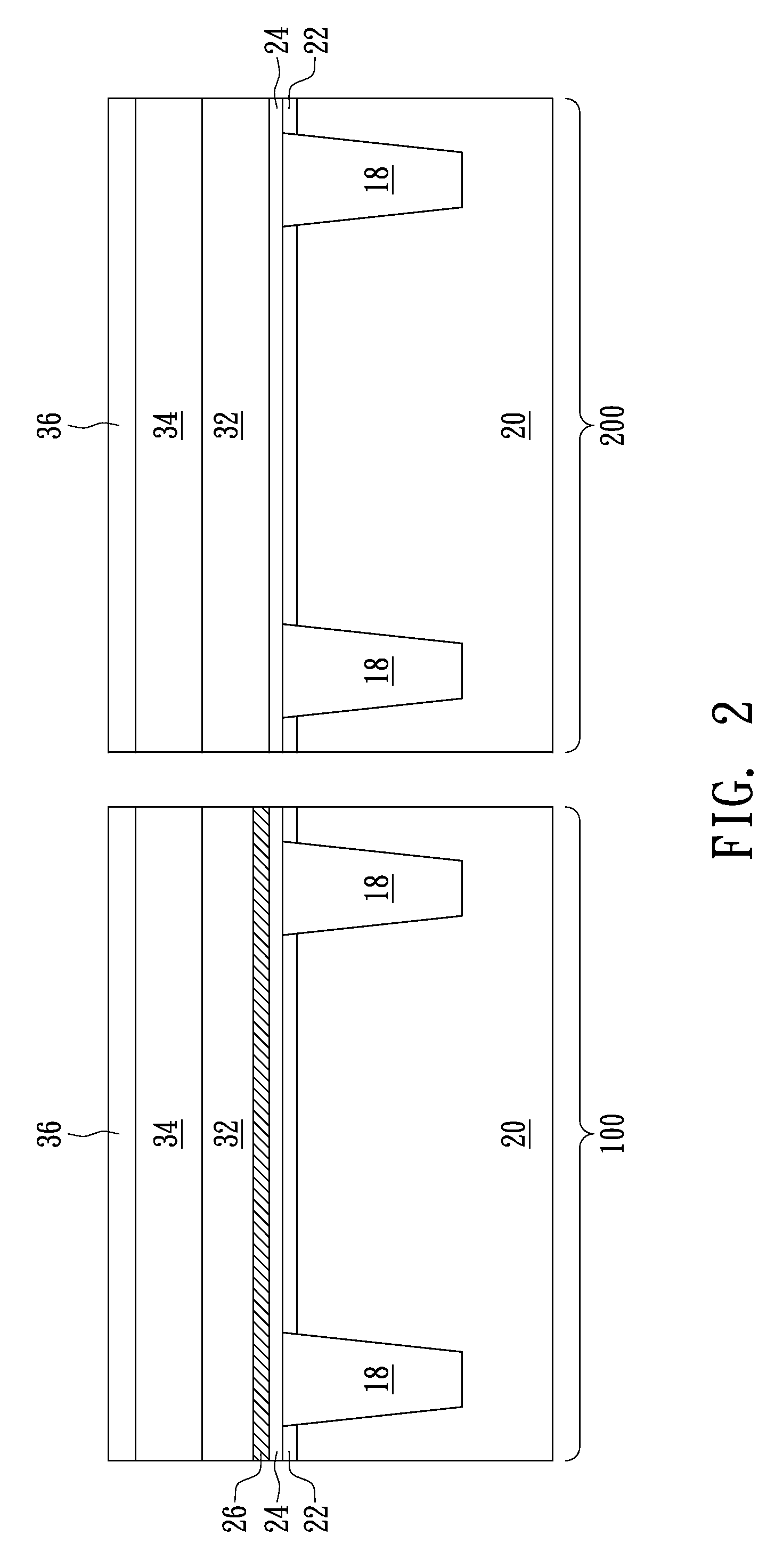Hybrid Process for Forming Metal Gates of MOS Devices
a technology of metal oxides and mos, applied in the direction of semiconductors, semiconductor devices, electrical devices, etc., can solve the problems of increasing the effective gate dielectric thickness, affecting the efficiency of mos devices, so as to achieve the effect of reducing the threshold voltage of both pmos and nmos devices, and increasing the stress applied to the channel regions of pmos devices
- Summary
- Abstract
- Description
- Claims
- Application Information
AI Technical Summary
Benefits of technology
Problems solved by technology
Method used
Image
Examples
Embodiment Construction
[0019]The making and using of the presently preferred embodiments are discussed in detail below. It should be appreciated, however, that the present invention provides many applicable inventive concepts that can be embodied in a wide variety of specific contexts. The specific embodiments discussed are merely illustrative of specific ways to make and use the invention, and do not limit the scope of the invention.
[0020]A method for forming hybrid complementary metal-oxide-semiconductor (CMOS) devices with dual metal gates is provided. The method combines gate-first and gate-last approaches to achieve better effects. The intermediate stages of manufacturing a preferred embodiment of the present invention are illustrated. Throughout the various views and illustrative embodiments of the present invention, like reference numbers are used to designate like elements.
[0021]Referring to FIG. 1, substrate 20 is provided, which may be formed of commonly used semiconductor materials and structur...
PUM
 Login to View More
Login to View More Abstract
Description
Claims
Application Information
 Login to View More
Login to View More - R&D
- Intellectual Property
- Life Sciences
- Materials
- Tech Scout
- Unparalleled Data Quality
- Higher Quality Content
- 60% Fewer Hallucinations
Browse by: Latest US Patents, China's latest patents, Technical Efficacy Thesaurus, Application Domain, Technology Topic, Popular Technical Reports.
© 2025 PatSnap. All rights reserved.Legal|Privacy policy|Modern Slavery Act Transparency Statement|Sitemap|About US| Contact US: help@patsnap.com



